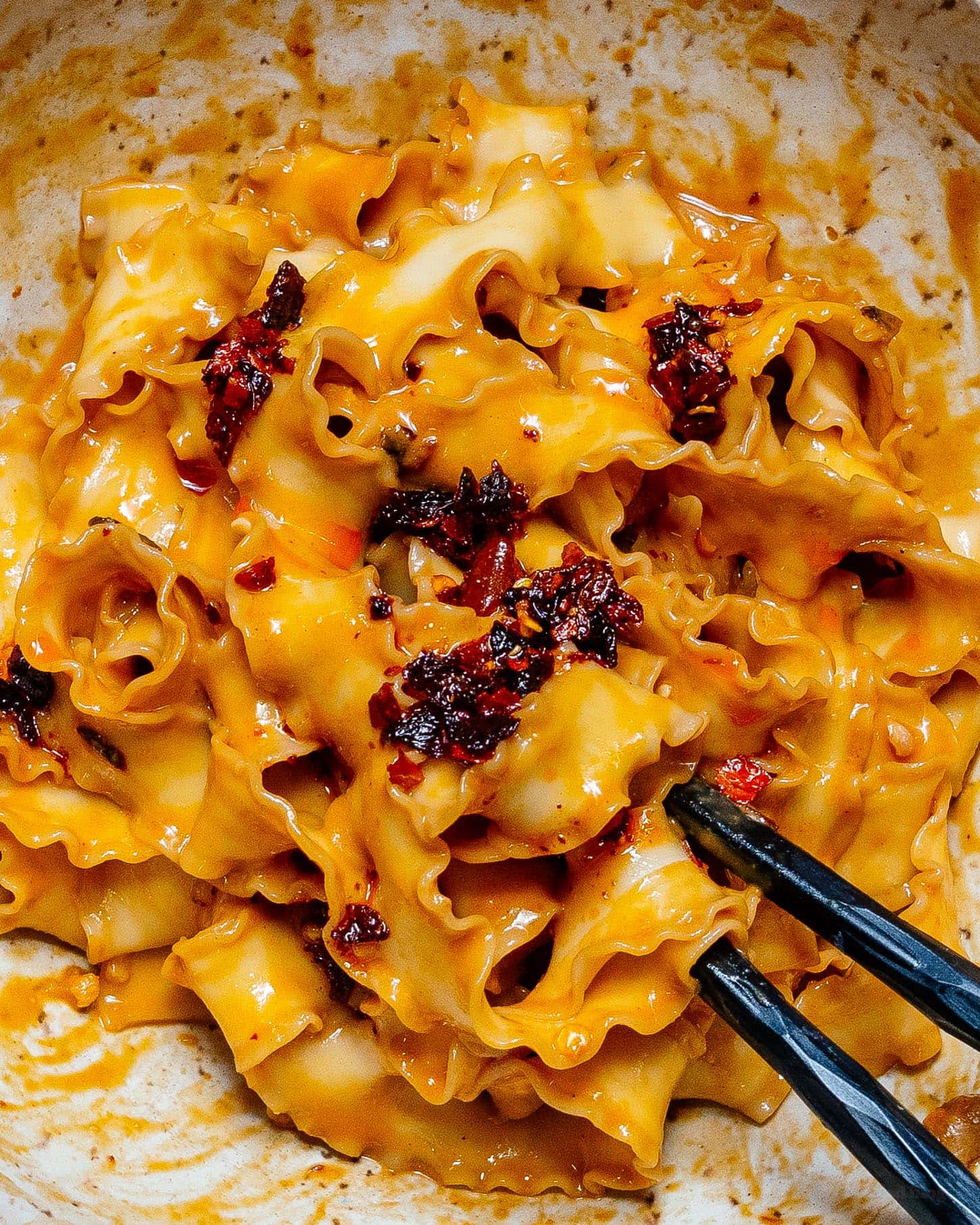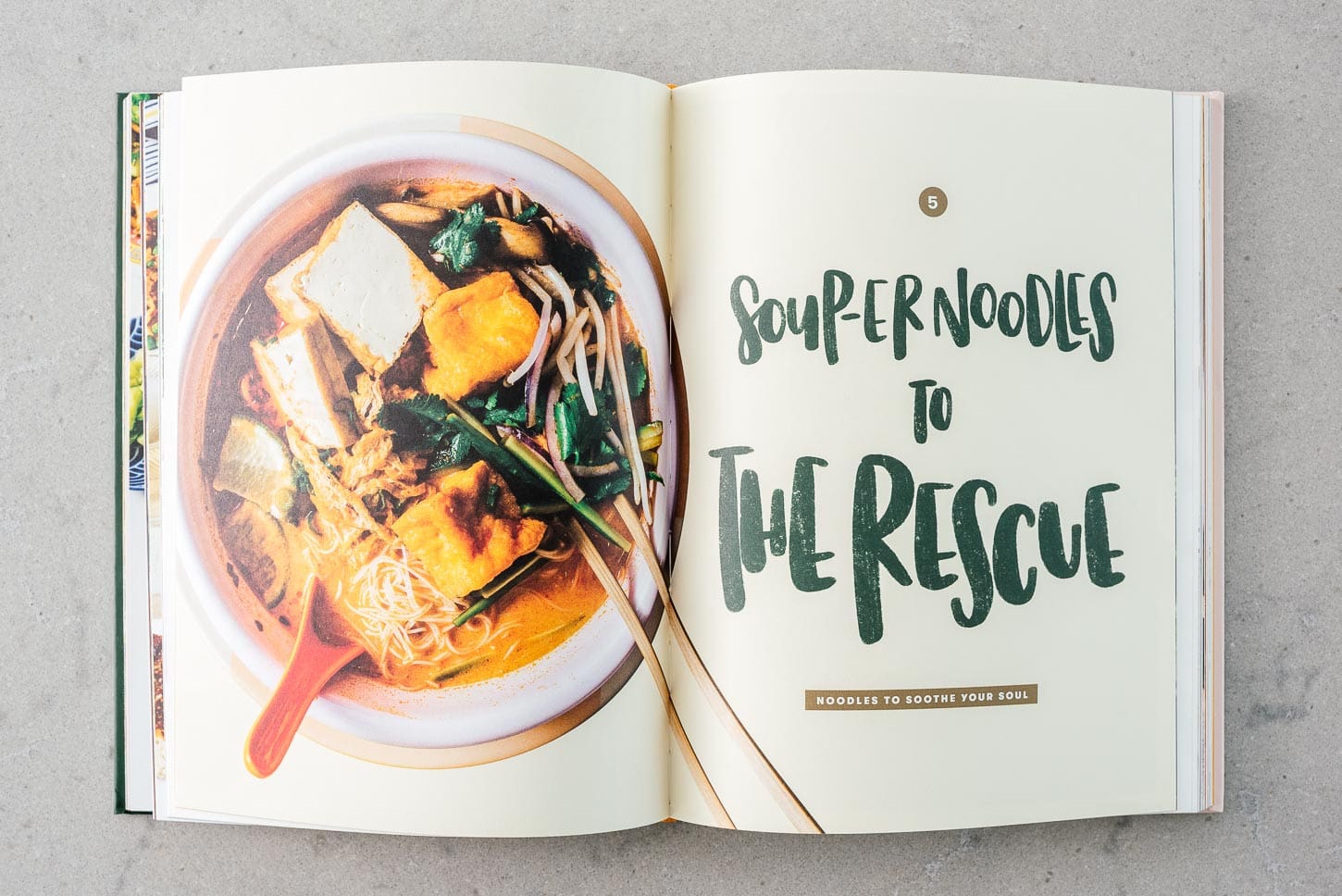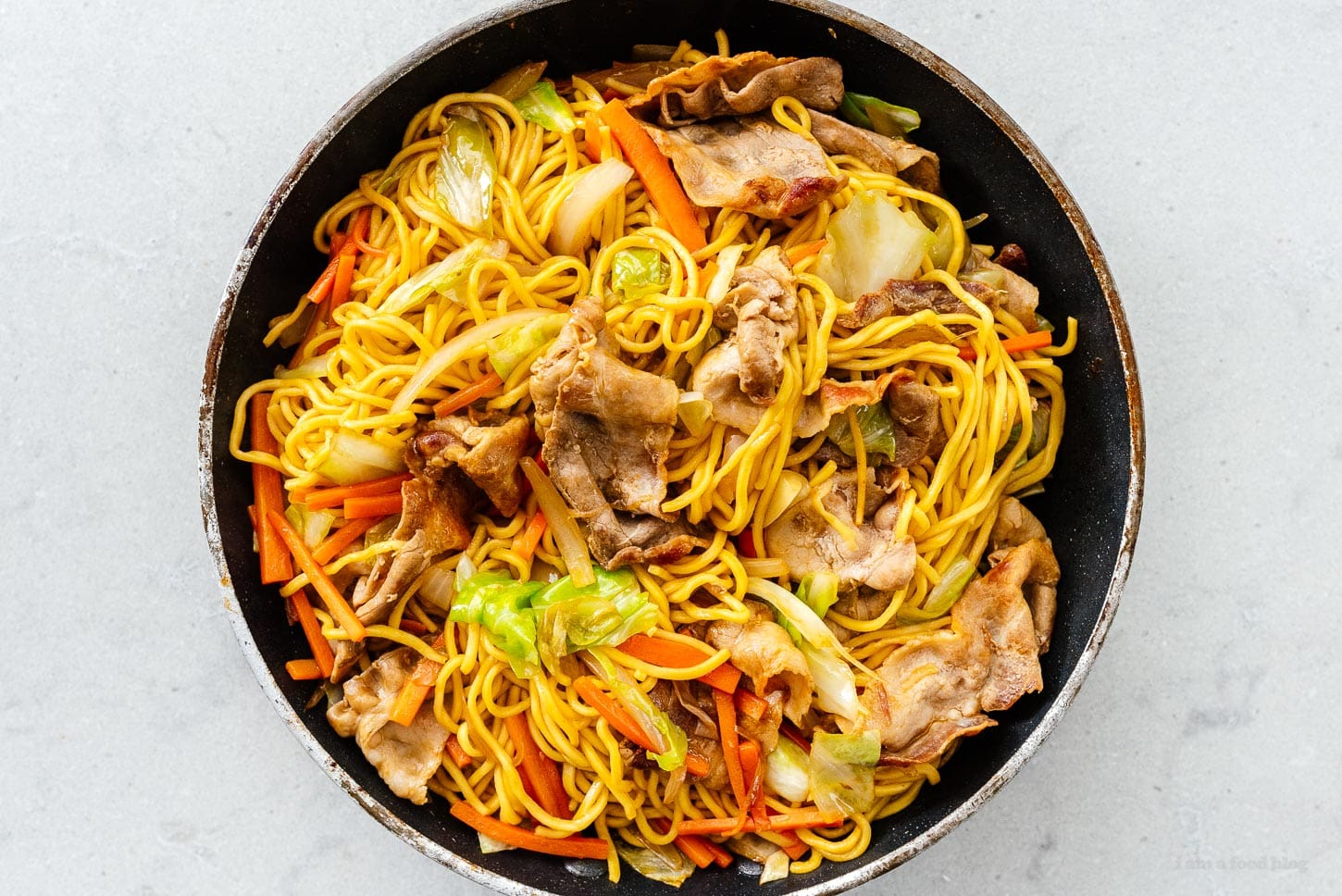
Saucy, noodle-y, and full of umami, yakisoba is a hearty, all-in-one dish that is absolutely delicious.
In Japan, when you go to a festival, whether it’s in the spring, summer, fall, or winter, there will inevitably be a yakisoba stand. Neat little piles of yakisoba will be waiting on a giant grill top to be scooped up into containers and handed over to you with a pair of wooden chopsticks. For me, no Japanese festival is complete without slurping up steaming hot, delicious, umami filled yakisoba. I miss living in Japan so much it hurts. When it gets to be too much, I whip up a batch of yakisoba and Mike and I sit on our balcony and eat yakisoba in the fresh air and reminisce.

What is yakisoba?
Yakisoba, literally “fried noodles” in Japanese, is a classic noodle stir fry dish that’s one of Japan’s best known noodle dishes, next to ramen, soba, and udon. It’s a well-loved street food, both made at home and served up in restaurants. If you love fried noodle dishes, you’ll love yakisoba.
Contrary to the name, yakisoba is not actually made with soba noodles. Yakisoba is a Japanese take on Chinese noodles and is typically made with precooked wheat noodles that you can find at the grocery store. They’re labeled “yakisoba noodles” at the store.
Yakisoba is extremely easy to make and you can add any ingredient you heart desires. Classic is pork and cabbage, but if you’re skipping out on meat, you can easily substitute in more vegetables or add tofu as the protein. It’s the perfect quick meal and great for dinner and meal prep!
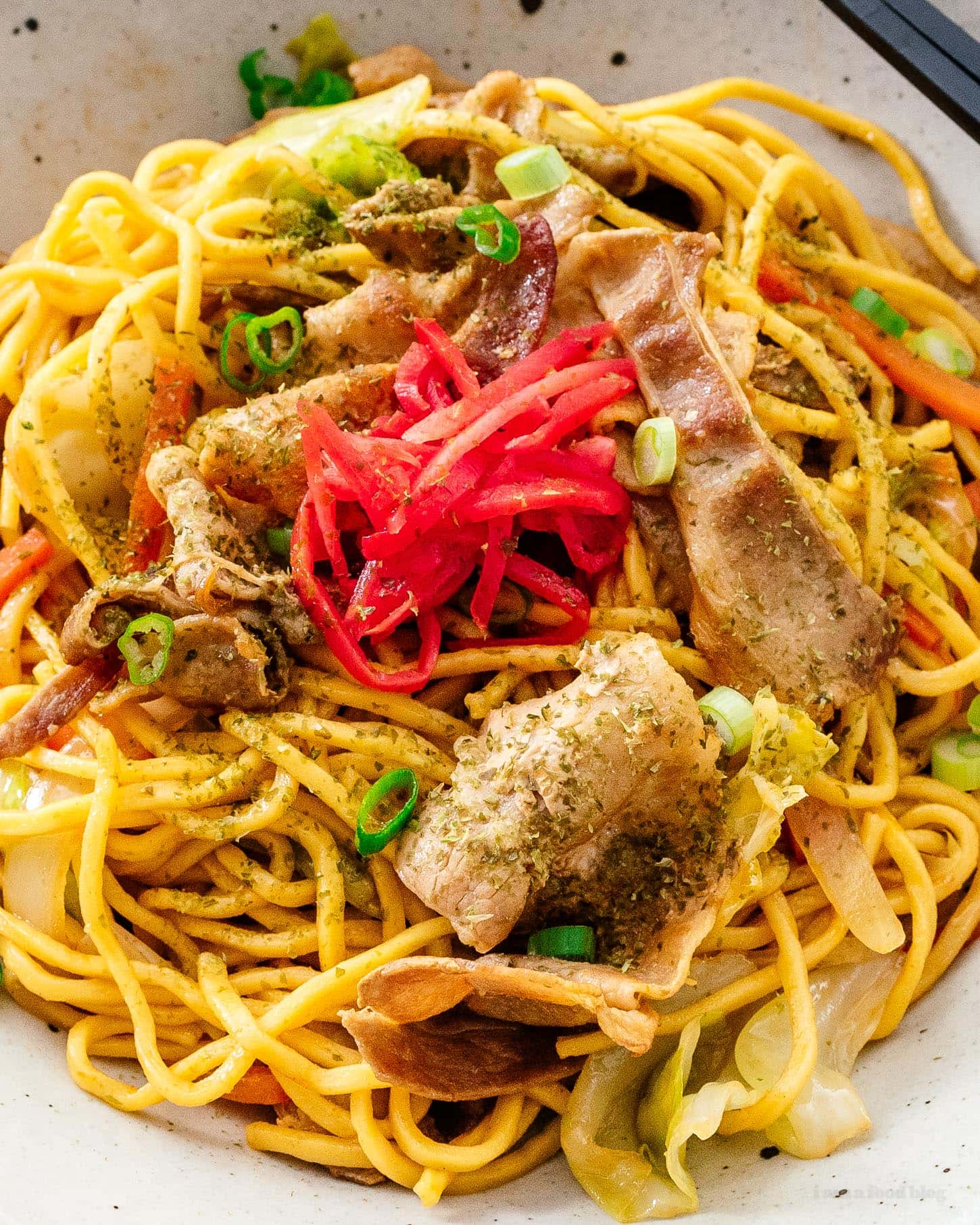
How to make yakisoba
- Make the sauce. Mix together Japanese Worcester sauce, oyster sauce, ketchup, soy sauce, and a bit of sugar.
- Prep. Chop all your vegetables and slice your protein into bite sized pieces. Loosen up the noodles.
- Cook. Heat up a bit of oil and cook the protein and vegetables.
- Toss. Add the noodles and sauce and toss until the sauce coats all the noodles and everything is glossy.
- Enjoy. Top with seaweed and ginger and enjoy hot!
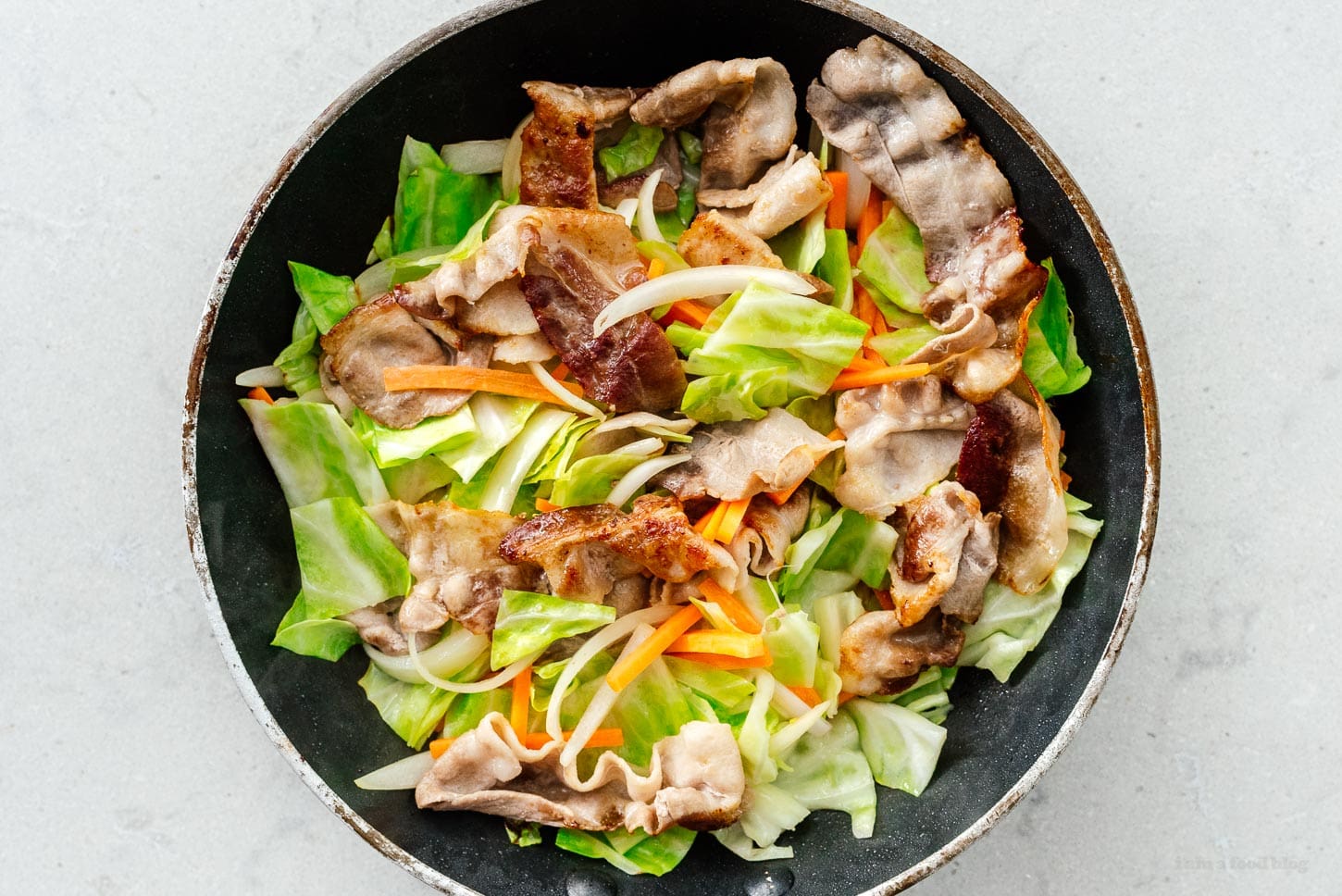
What kind of noodles do you use for yakisoba?
In English soba always implies buckwheat noodles but the noodles used for yakisoba are not buckwheat at all, they’re actually mushi chukamen, which means steamed Chinese style noodles (“mushi” means steamed, “chuka” means Chinese, and “men” means noodles). They’re very similar to ramen noodles because they’re made with water, flour, and kansui – an ingredient that helps with noodle texture and color. When you buy yakisoba noodles at the store, they come pre-steamed so you just quickly reheat them in sauce.
What brand of yakisoba noodles?
There are two popular brands of yakisoba noodles: Myojo and Maruchan. They come steamed, coated in oil, and packed into individual servings. You can find them in the refrigerated section of most Asian grocery stores. If you can’t find yakisoba noodles, you can also use fresh ramen noodles, dried instant ramen packs without the seasoning, or chow mein noodles. They all work great!
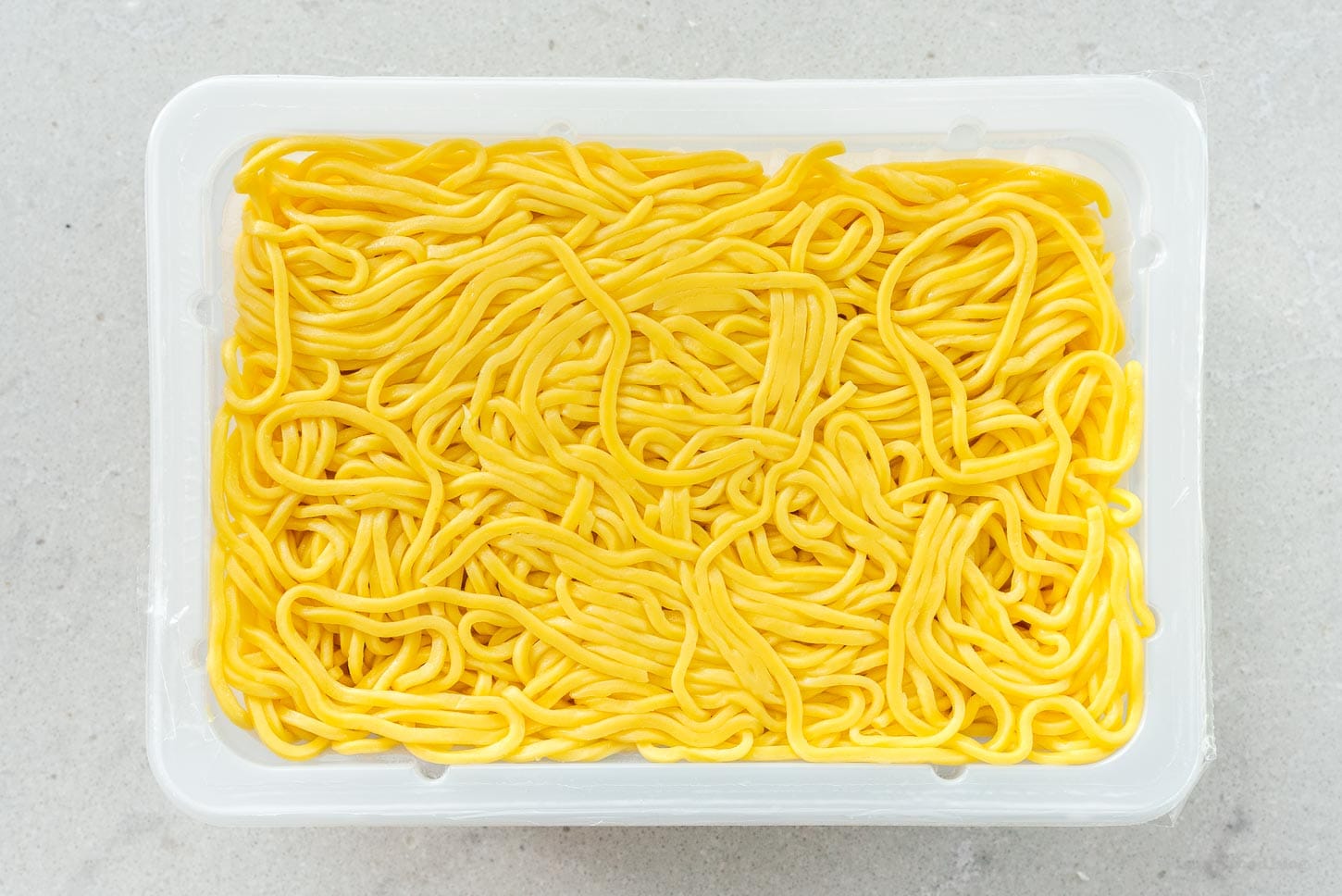
My favorite noodles for yakisoba
I like to use steamed Chinese noodles for yakisoba. The packages of yakisoba noodles from Japan are super convenient but the noodles tend to break. Since yakisoba is a take on Chinese noodles, I prefer to use Chinese cooked noodles or lo mein noodles. Essentially they are mushi chukamen, steamed Chinese noodles. You can find these in the refrigerated section of Asian grocery stores, they’re usually labelled “cooked noodles,” “oil noodles,” or “lo mein noodles.”
Yakisoba sauce
Yakisoba sauce consists of Japanese Worcester sauce, oyster sauce, ketchup, soy sauce, and a bit of sugar. I usually just mix it up at home, but they sell yakisoba sauce as well, in a convenient squeeze bottle. You can find it online or in Asian grocery stores.
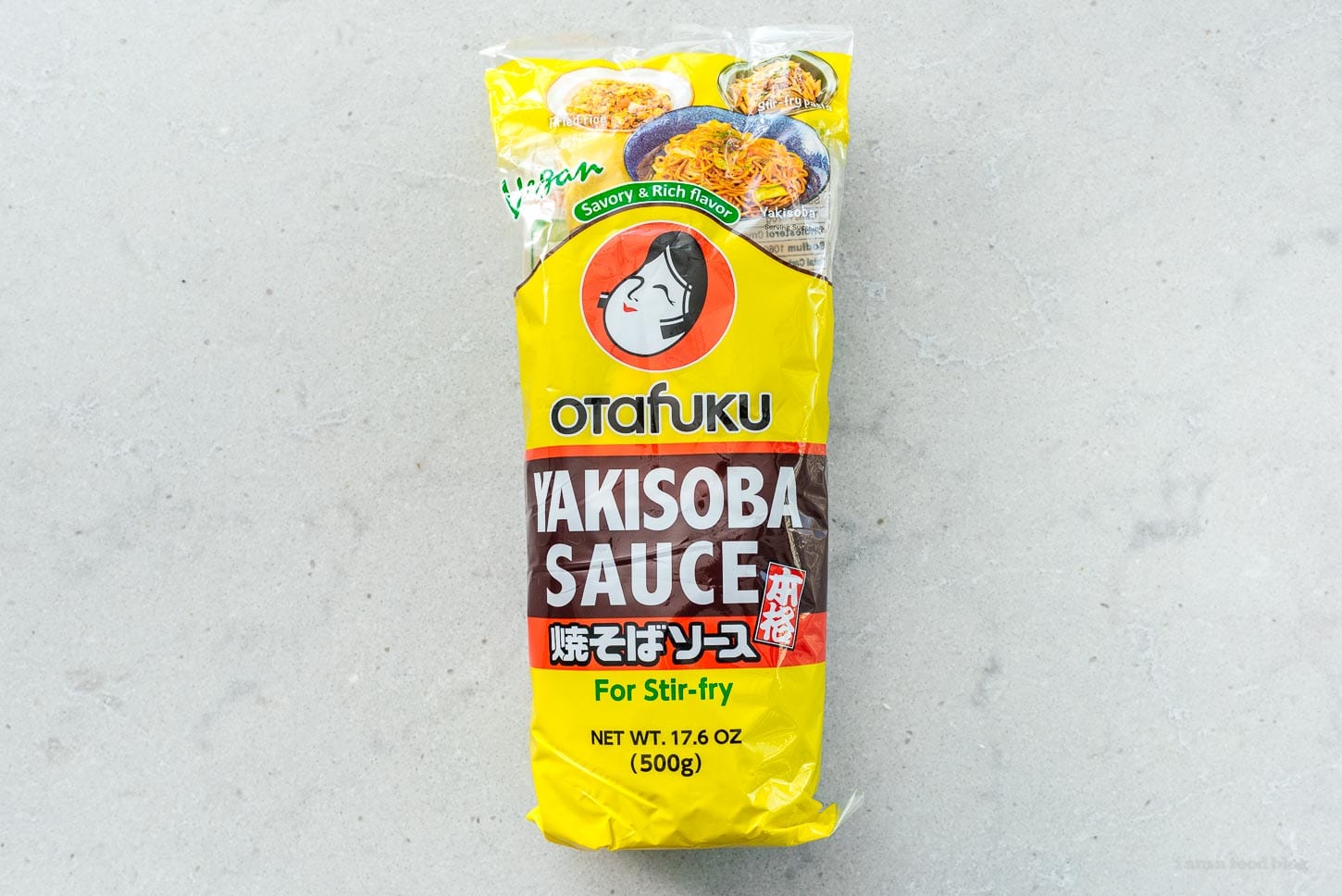
Japanese Worcestershire sauce
Japanese Worcestershire sauce is almost like Lea and Perrins Worcestershire sauce, but made completely differently. Typically called “sosu” (ソース), Japanese Worcestershire is a sweet, savory, tangy sauce made from fruits, vegetables, sugar, and spices. It tastes vastly different from Worcestershire sauce. You can buy Japanese Worcestershire sauce online or in Asian grocery stores. The most popular sosu producer in Japan is Bull-Dog and they produce 3 main types of sauce, differing mostly on thickness. For yakisoba we need thin, or usuta sauce.
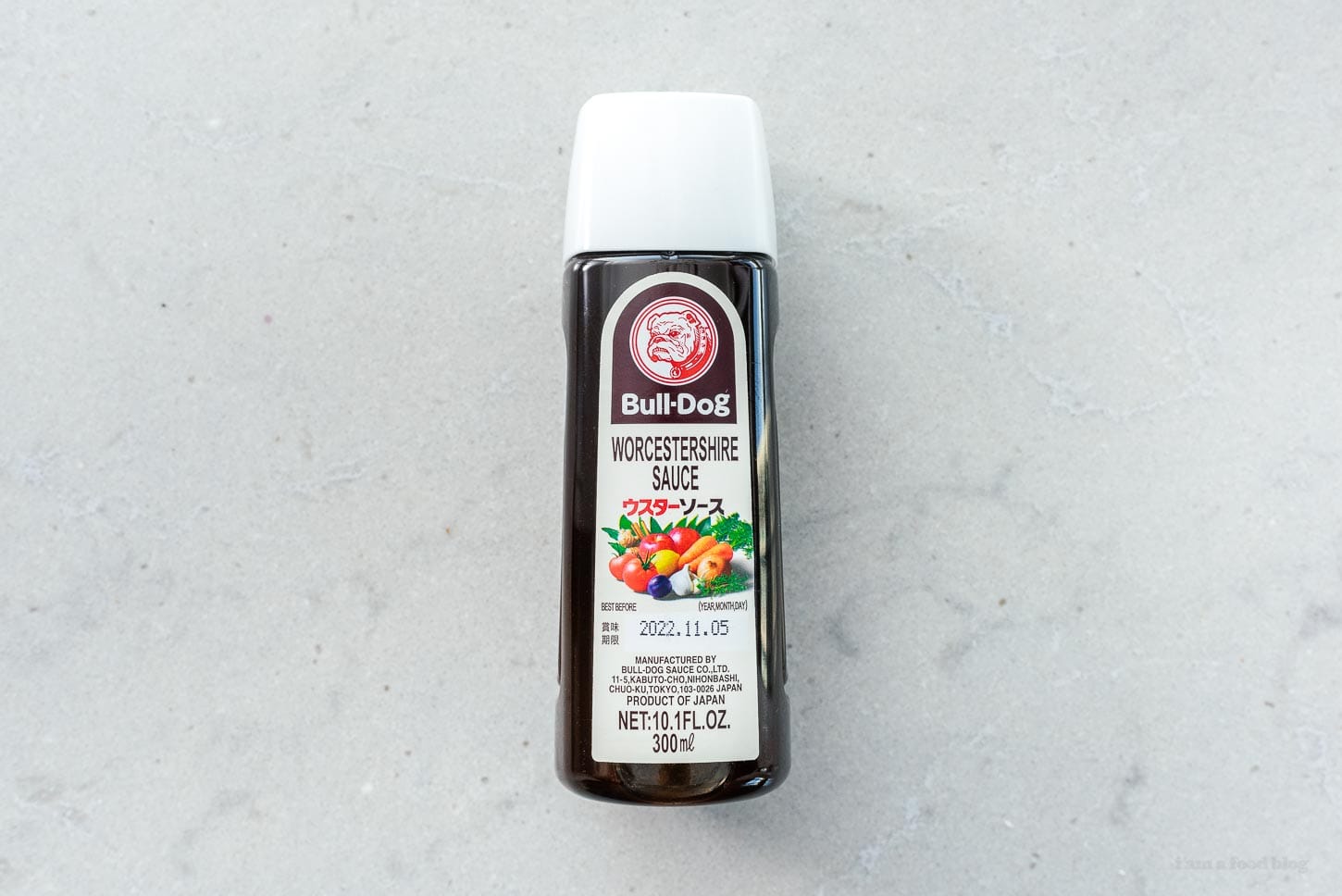
Oyster sauce
Since yakisoba is a Japanese version of a Chinese dish, they use oyster sauce as a seasoning. Oyster sauce is a classic Chinese sauce that’s thick and savory with a hint of caramel sweetness and umami. You can buy it online or the Asian grocery store. It adds an extra oomph to your yakisoba.
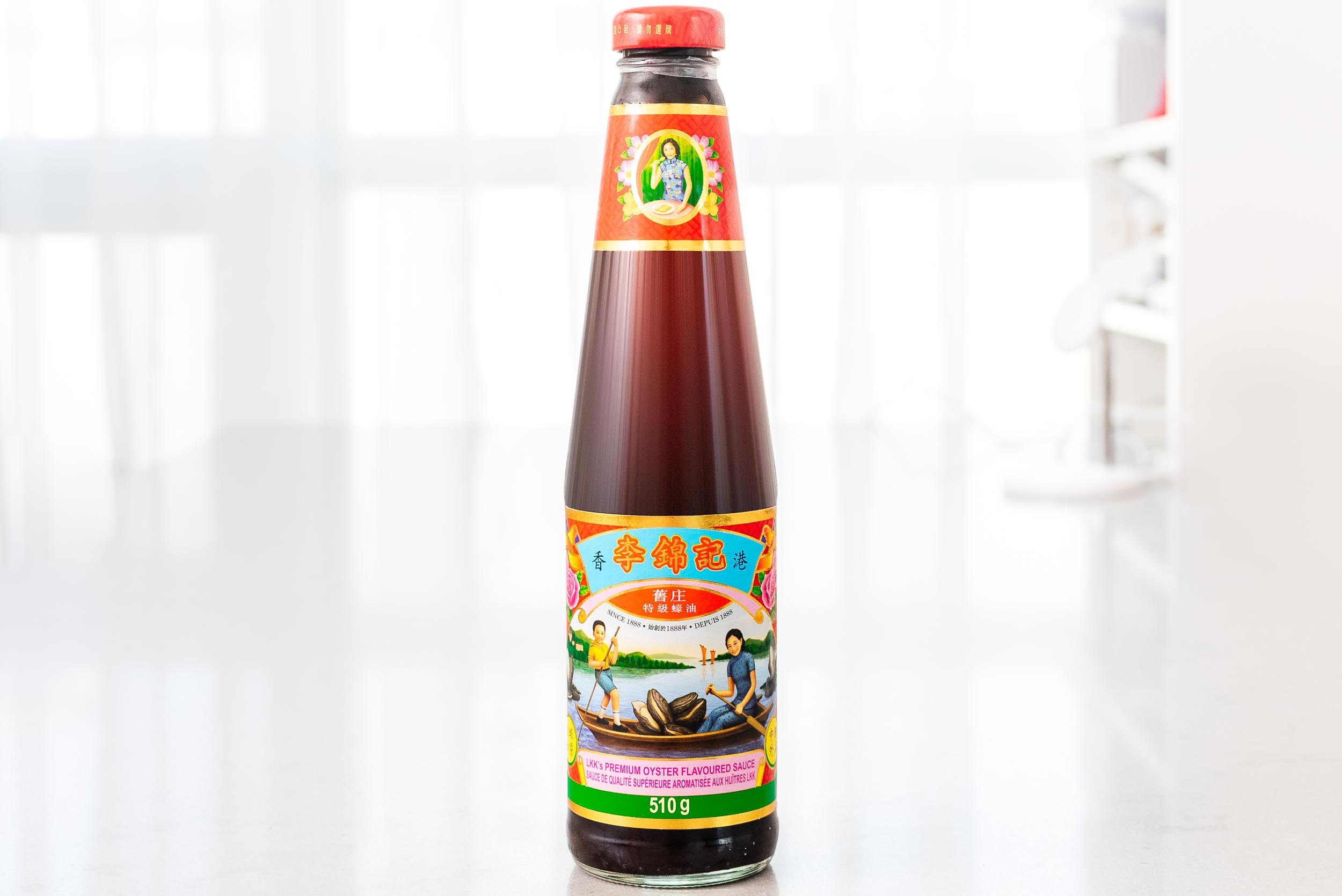
Meat
Thinly sliced pork belly is the Japanese meat of choice, but you can also use thinly sliced beef, cubed up chicken, or firm tofu. They sell thinly sliced pork belly in the frozen section at Asian grocery stores but if you’re looking for a handy substitute, you can use side pork cut into bite size pieces or even bacon if you like it a bit smokier.
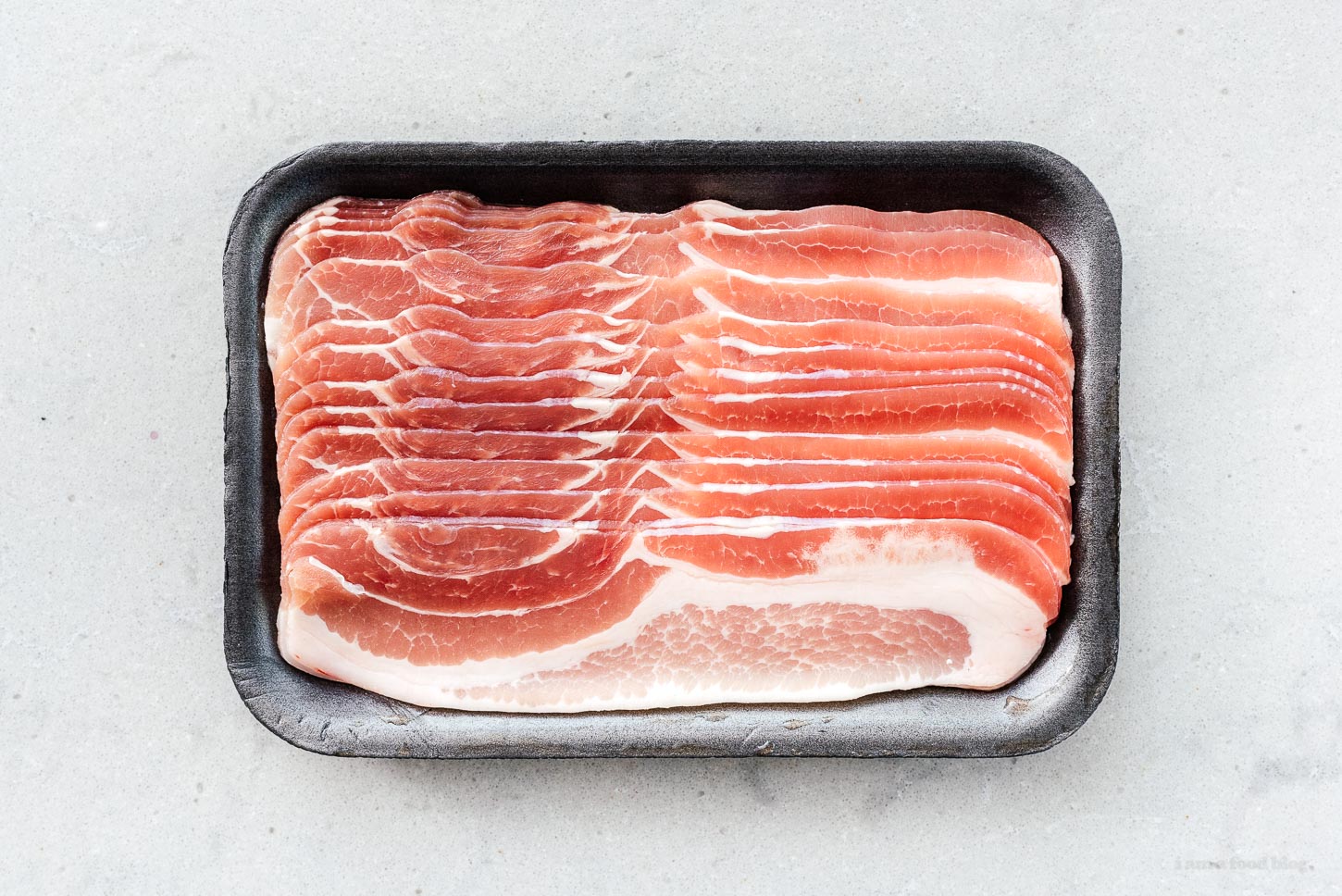
Vegetables
Cabbage is classic, along with onions and carrots, but you can really go wild and use any and all vegetables. Mushrooms are great and shredded kale is amazing. Just make sure to cut the vegetables into bite size pieces.
Yakisoba toppings
After your noodles are hot and crisp, it’s time to serve it up and add on the toppings!
- aonori – tiny dried and powdered flakes of seaweed that add saltiness and umami. You can buy it online or use crumbles of seaweed snack if you have that.
- beni shoga – pretty red strips of pickled ginger that add a sour vinegary bite and contrast the richness of the noodles. You can find this in the refrigerated section of Asian grocery stores. Sometimes you might find this called kizami shoga.
- katsuobushi/bonito flakes – add an extra hit of umami with these dried fish flakes, available online.
- Kewpie mayo – a little squiggle of Kewpie mayo on top is amazing, try it!
- fried egg – everything is buttery with a sunny side up egg.
- toasted sesame seeds – sesame seeds add a bit of crunch and nuttiness.
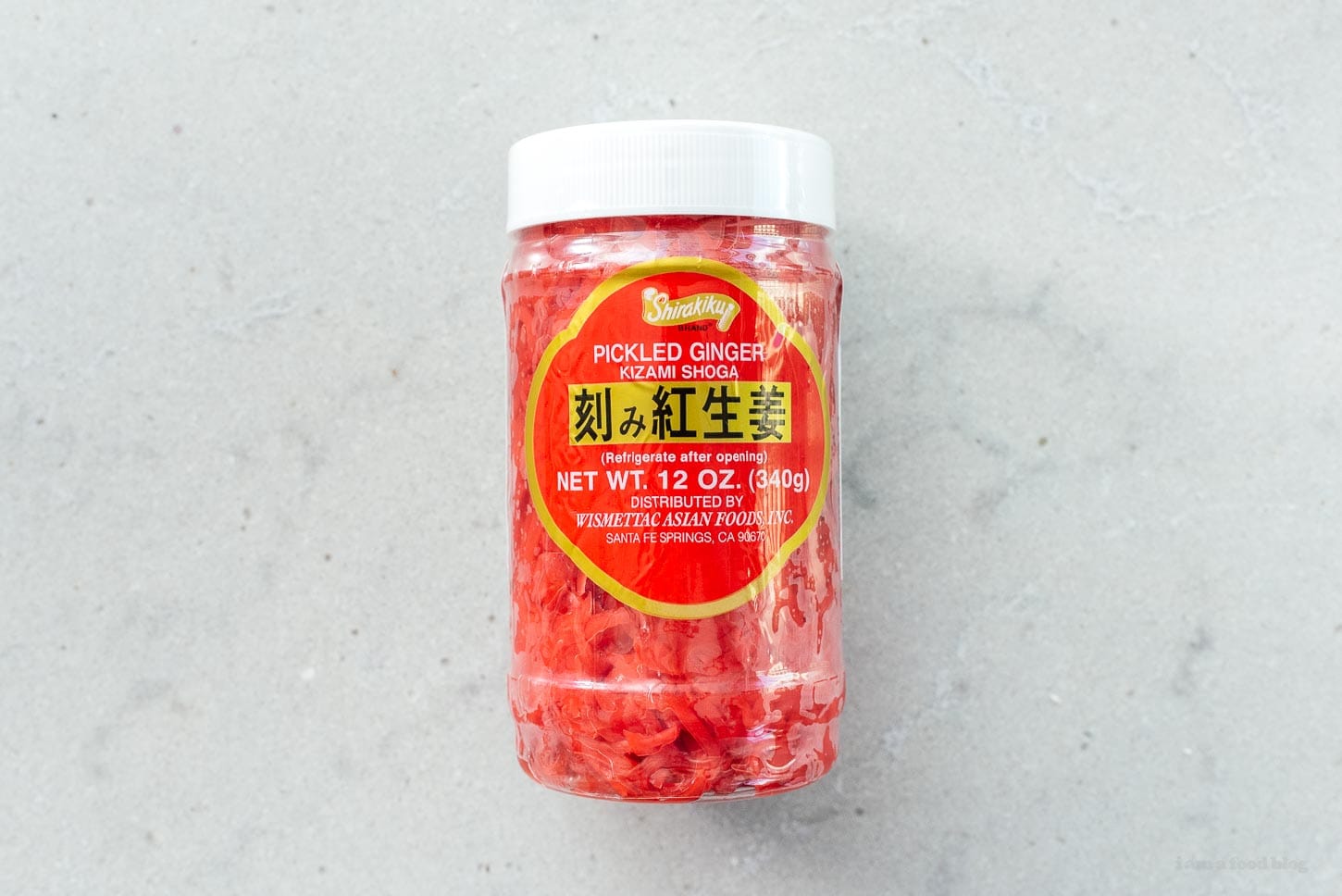
How to serve
Yakisoba is typically served as a main or side dish. You can serve it alongside a bunch of other dishes, such as gyoza, chicken karaage, and takoyaki for a fun Japanese feast.
Tips and tricks
- Prep everything in advance. Make the sauce, loosen the noodles, slice the meat and prep the vegetables. Most of the work is prep, the actual cooking goes very quickly.
- Loosen up the noodles before you add them to the pan. Many packaged noodles come compressed when you take them out of the package. If you add them directly to the pan, you’ll end up breaking them while you’re cooking. Instead, loosen the noodles in warm water and use your hands to gently separate the strands. Make sure to drain the noodles well.
That’s it! Now you can noodle with the best of the festival yakisoba makers in Japan. Bring a bit of Japan home and noodle away!
xoxo steph
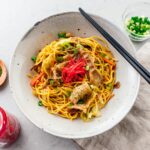

Yakisoba Recipe
#wprm-recipe-user-rating-0 .wprm-rating-star.wprm-rating-star-full svg * { fill: #f5a623; }#wprm-recipe-user-rating-0 .wprm-rating-star.wprm-rating-star-33 svg * { fill: url(#wprm-recipe-user-rating-0-33); }#wprm-recipe-user-rating-0 .wprm-rating-star.wprm-rating-star-50 svg * { fill: url(#wprm-recipe-user-rating-0-50); }#wprm-recipe-user-rating-0 .wprm-rating-star.wprm-rating-star-66 svg * { fill: url(#wprm-recipe-user-rating-0-66); }linearGradient#wprm-recipe-user-rating-0-33 stop { stop-color: #f5a623; }linearGradient#wprm-recipe-user-rating-0-50 stop { stop-color: #f5a623; }linearGradient#wprm-recipe-user-rating-0-66 stop { stop-color: #f5a623; }
Ingredients
- 2 tbsp Japanese Worcestershire sauce
- 1 tbsp oyster sauce
- 1 tbsp ketchup
- 1/2 tbsp soy sauce Japanese preferred
- 1 tsp sugar
- 1 tbsp neutral oil
- 3/4 lb pork belly thinly sliced, or other protein of choice
- 1/2 medium onion sliced
- 1 medium carrot julienned
- 4 leaves cabbage chopped
- 1 lb cooked yakisoba noodles loosened, or lo mein
- 2 stalks green onions sliced
- aonori optional
- beni shoga/pickled ginger optional
Instructions
-
In a small bowl, mix together the Japanese Worcestershire sauce, oyster sauce, ketchup, soy sauce, sugar, and 2 tbsp water. Set aside.

-
Heat up the oil in a large nonstick pan over medium high heat. Add the pork to the pan and cook, flipping as needed until golden brown and cooked through.
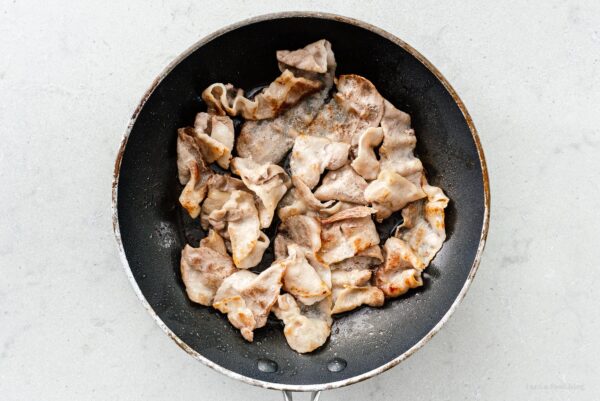
-
Add the onions, carrots, and cabbage. Cook, stirring, until soft but not brown, 1-2 minutes.
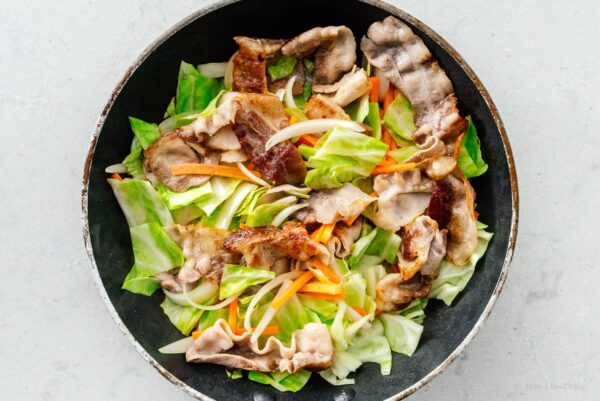
-
Turn the heat to medium and add the loosened noodles into the pan along with the sauce. Toss until everything is hot and coated with sauce and glossy. Stir in the green onions.
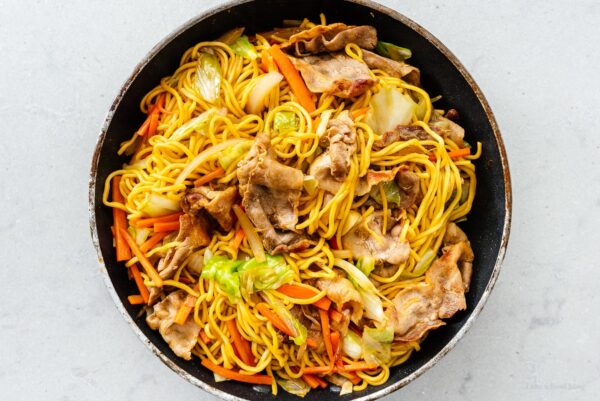
-
Serve topped with aonori and beni shoga. Enjoy!
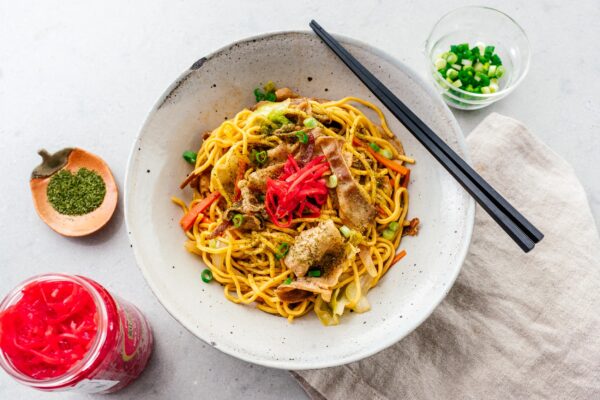
Estimated Nutrition
Calories from Fat 458

